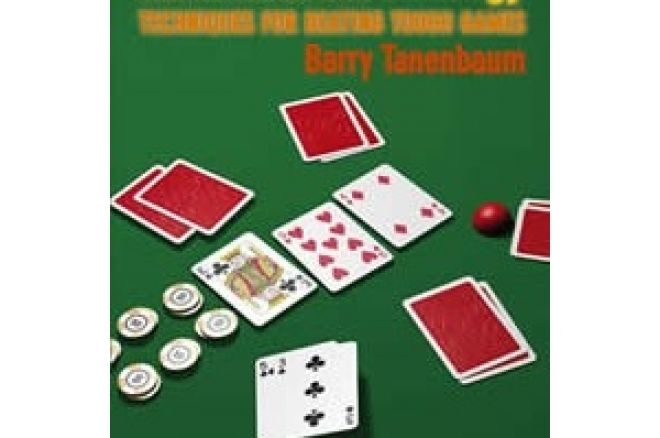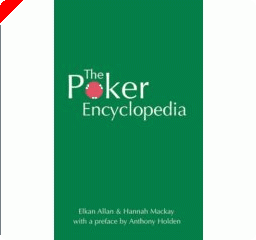Poker Book Review: Barry Tanenbaum's 'Advanced Limit Hold 'em Strategy'

Professional cash game player Barry Tanenbaum's Advanced Limit Hold 'em Strategy: Techniques for Beating Tough Games marks an important contribution not just to that category of texts devoted to limit hold 'em, but to the greater overall knowledge of poker strategy and theory. While of particular benefit to middle- and high-stakes LHE players, the book has a lot to offer to players of other games, too. With its many helpful lessons and careful, clear presentation of difficult concepts, Advanced Limit Hold 'em Strategy deserves a place alongside other must-have books for the serious poker player.
As the title indicates, the book is not intended for newcomers to the game. "If you are a beginner, please do not read this book first," advises Tanenbaum. "Read some basic books and play for a while. I am trying to improve your game, not give you one." Indeed, Tanenbaum does not purport to provide players a new style, but rather to teach them to how to cultivate and improve upon the style they already have.
Specific advice Tanenbaum gives, say, about how to think about certain starting hands from certain positions, may strike one as "tight" or "loose" (depending on one's viewpoint). However, it would be inaccurate to characterize Tanenbaum as promoting any particular style of play. If anything, the "style" Tanenbaum advocates is really better characterized as an "attitude" or "orientation" �� namely, always to remain aware of the various factors affecting one's success at the table, and to plan one's actions accordingly. "You should always know why you bet, or checked, or called, or raised," advises Tanenbaum.
Advanced Limit Hold 'em Strategy is especially well organized and presented, reflecting Tanenbaum's many years as a poker coach as well as his experience writing over 100 columns for CardPlayer magazine, from which some of the material included here first appeared. The book is divided into two sections, "Concepts" and "Stages".
In "Concepts," Tanenbaum primarily focuses on issues and problems one repeatedly faces in a variety of poker situations. (This is the section of the book I'd suggest is particularly useful to both LHE and non-LHE players.) The discussion is organized around five key areas of emphasis: the importance of position; recognizing opponents' tendencies; understanding when and how to use aggression; creating dead money; and correctly assessing the significance of image, both one's own and those of others.
Central to all of Tanenbaum's advice is his opening contention that those poker players who profit the most are all adept at "forcing their opponents into predictability" while "being unpredictable themselves." As a way of introducing strategies for achieving those goals, he evokes an old marketing tactic �� abbreviated "FUD" �� to help emphasize the need to "spread fear, uncertainty, and doubt among your opponents" at the table.
One key way to spread "FUD" is to create what Tanenbaum calls the "Illusion of Action," that is, to play in a manner and with enough frequency to appear to be giving "action," thereby getting real action in those situations when one indeed has the best of it. The concept covers a variety of plays (e.g., using position, exploiting weaknesses, creating dead money) that may well fall outside of one's usual arsenal �� and are not necessarily recommended when up against unimaginative or unobservant opponents.
Other important concepts addressed by Tanenbaum include hand reading, noticing tells in others and avoiding giving them oneself, and maintaining balance. There are also a number of valuable suggestions regarding various issues one encounters when moving up in limits and/or to more difficult games.
"Stages" is presented according to the four stages of a hand of limit hold 'em: pre-flop, flop, turn, and river. It should be noted, however, that Tanenbaum rarely discusses a given hand without remaining mindful of how it plays within a sequence of hands from which a multitude of factors should influence one's decision making.
The discussion of pre-flop play does consider hand values and hand selection, though it forgoes offering a starting hand chart in favor of providing in-depth, insightful mini-lectures on all the possible hands with which one might enter a pot. Also included here is a terrific dissection of blind play, an important area not often afforded such close attention.
Keeping with the theme of always remaining aware of the reasons why one bets, checks, calls, or raises, subsequent sections each focus on particular situations while always being mindful of integrating individual plays into an overall "plan" for the hand. Tanenbaum examines specific, common scenarios (e.g., reraising the flop, playing the turn out of position) to good effect, often punctuating his analyses with highly instructive examples.
"Many people sort of 'play at poker' rather than playing poker," asserts Tanenbaum. "Playing correctly requires thinking about your hand, the board, and what you would do to minimize your loss or maximize your profit." [I]Advanced Limit Hold 'em Strategy </i > provides readers with a host of tools and techniques for becoming more aware, more thoughtful �� and thus more profitable �� poker players.








